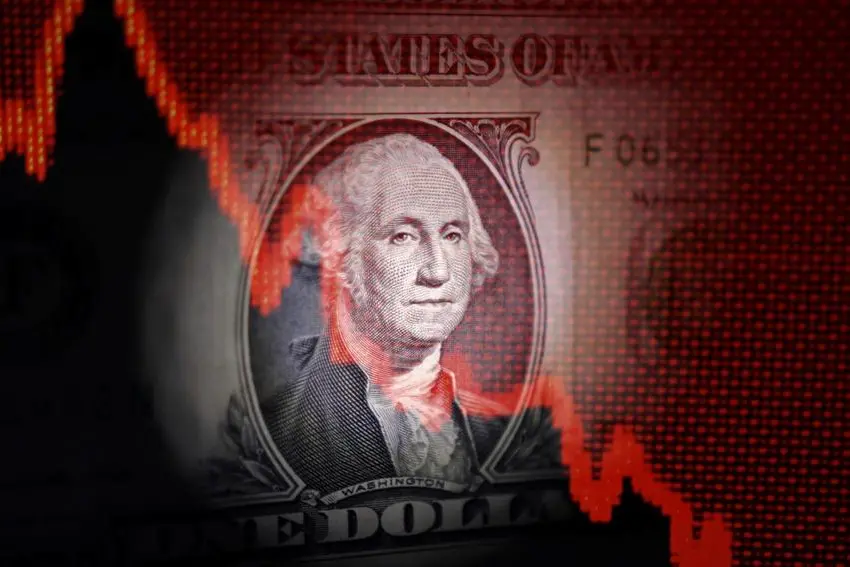PHOTO
(The opinions expressed here are those of the author, a columnist for Reuters.)
ORLANDO, Florida - If the United States is to significantly reduce or, whisper it, eliminate its trade deficit, the dollar will probably have to weaken a lot. How much is unclear, though, as history shows large dollar declines are rare and have unpredictable consequences for trade.
Reducing the U.S. trade deficit is the key goal of President Donald Trump's economic agenda because he believes it reflects decades of other countries "ripping off" America to the tune of hundreds of billions of dollars annually.
Stephen Miran, chair of the Council of Economic Advisers, published a paper in November titled "A User's Guide to Restructuring the Global Trading System" in which he argued that the dollar is "persistently over-valued" from a trade perspective. "Sweeping tariffs and a shift away from strong dollar policy" could fundamentally reshape the global trade and financial systems.
If a weaker exchange rate is the Trump administration's goal, it is on the right track, with the greenback down nearly 10% this year on the back of growing concerns over Washington's fiscal trajectory and policy credibility as well as the end of "U.S. exceptionalism" and the "safe haven" status of Treasuries.
But it is good to remember that a 15% fall in the dollar during Trump's first term had no impact on the trade deficit, which remained between 2.5% and 3.0% of GDP until the pandemic. Making a dent in the U.S. deficit will therefore require a much bigger move.
THE WEIGHT OF HISTORY
Reducing the trade deficit will be a challenge, eliminating it without a recession, a historic feat. The United States has run a persistent deficit for the past half-century, as insatiable consumer demand has sucked in goods from around the world and voracious appetite for U.S. assets from overseas has kept capital flowing stateside.
The only exception was in the third quarter of 1980, when the U.S. posted a slender trade surplus of 0.2% of GDP, and trade with the rest of the world almost briefly balanced in 1982 and 1991-92.
But these periods all coincided with - or were the result of - sharp slowdowns in U.S. economic activity that ultimately ended in recession. As growth shrank, import demand slumped and the trade gap narrowed.
The dollar only played a significant role in one of them. In 1987, the trade gap was a then-record 3.1% of GDP. But it had almost disappeared by the early 1990s, largely because of the dollar's 50% devaluation from 1985-87, its biggest-ever depreciation.
That three-year decline was accelerated by the Plaza Accord in September 1985, a coordinated response between the world's economic powers to weaken the dollar following its parabolic rise in the first half of the 1980s.
But that does not mean large depreciations always coincide with reductions in the trade deficit.
The dollar's second-largest decline was a 40% fall between 2002 and mid-2008, just before Lehman Brothers collapsed. But the U.S. trade deficit actually widened throughout most of that period, peaking at a record 6% of GDP in 2005. While it had shrunk by more than three percentage points by 2009, that was due more to plunging imports during the Great Recession than the exchange rate.
These two episodes of deep, protracted dollar depreciation stand out because over the past 50 years, the dollar index has only had two other declines exceeding 20%, in 1977-78 and the early 1990s, and a few other slides of 15-20%. None of these had any discernible impact on the U.S. trade balance.
DEFICIT TO 'VANISH'?
The U.S. administration is correct that the dollar is historically strong today by several broad measures. Given that President Trump and Treasury Secretary Scott Bessent seem intent on rebalancing global trade, pressure on the greenback looks unlikely to lift any time soon.
But how much would the dollar have to fall to whittle away the yawning trade deficit, which last year totaled $918 billion, or 3.1% of GDP?
Hedge fund manager Andreas Steno Larsen reckons a 20-25% depreciation over the next two years would see the deficit "vanish", while Deutsche Bank's Peter Hooper thinks a 20-30% depreciation could be enough to "eventually" narrow the deficit by about 3% of GDP.
"This means that a significant reversal of the roughly 40% appreciation of the dollar in real (price-adjusted) terms against a broad set of currencies since 2010 could be sufficient to get the current deficit back to a zero balance," Hooper wrote last week.
History suggests this may be challenging without a severe economic slowdown. But that's a risk the administration seems prepared to accept.
(The opinions expressed here are those of the author, a columnist for Reuters)
(By Jamie McGeever; Editing by Helen Popper)





















